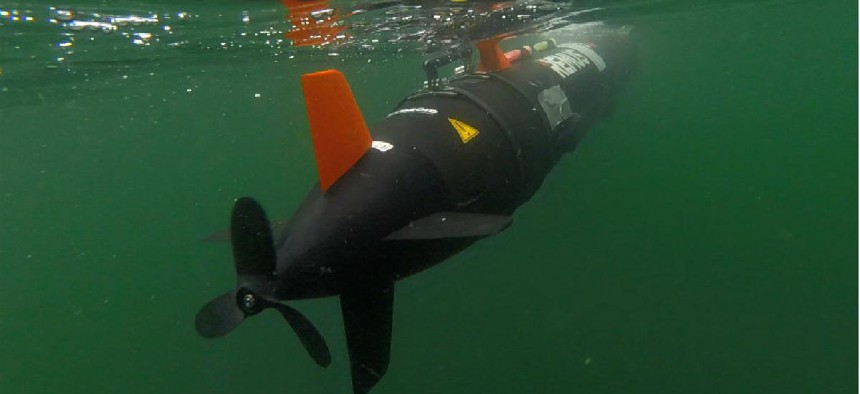
Lawmakers skeptical of seaborne drone fleet
The House defense committee is looking to add some oversight for rapid procurement of unmanned vehicles and vessels, and wants more detailed plans on how the Army will use its newly developed augmented reality headset.
Congress has been openly skeptical of the Navy's push to buy more unmanned vessels and that doubt is showing in the House's draft of the 2021 National Defense Authorization Act.
The Seapower and Projection Forces Subcommittee focused on the viability of unmanned surface and undersea vessels in addition to oversight of rapid acquisition authorities used to procure them in its mark.
"The Navy has added significant resources to its budget to rapidly and aggressively acquire a family of over 200 new unmanned and optionally manned surface and undersea vehicles. While unmanned maritime systems offer promise, past efforts, such as the Remote Minehunting Vehicle, have proven costly and unsuccessful," according to the Seapower and Projection Forces Subcommittee mark.
The committee wants the Government Accountability Office to brief defense committees by March 1 and report on cost, schedule, challenges, requirements and a plan to replace manned ships with unmanned ships.
The bill's language also sets out to block the Navy from buying "any large unmanned surface vessels in fiscal year 2021 until a certification regarding technology maturity has been submitted to Congress."
That certification includes some benchmarks like the vessel (and its command and control system) ability to be autonomous for at least 30 days, as well as a plan to measure and demonstrate the vessel's reliability, according to bill language.
Offensive weapons systems can't be affixed to the vessels until the defense secretary can certify to Congress that the system can comply with the laws of armed conflict, and explain how compliance can be achieved, according to the bill language.
Rapid acquisition turbulence
The Tactical Air and Land Forces Subcommittee also singled out rapid acquisition authorities used for unmanned systems, requiring reporting for future plans for the Army's Short Range Reconnaissance, Small Unmanned Aircraft Systems, which is used for intelligence, surveillance and reconnaissance. It's expected to field in fiscal 2021, according to the document.
But while the committee supports the use of rapid acquisition, it worries the system could be vulnerable to cyber threats due to the use of "non-traditional vendors" and that the first acquisition wave "did not necessarily incorporate costs of compliance with [DOD] cybersecurity policy."
Under the bill, the Army secretary would have to brief the HASC by Dec. 1 on the acquisition strategy for future tranches, including how it can include "established domestic" manufacturers, compliance with DOD's cyber policy and existing bans on Chinese-made unmanned small unmanned aircraft system components.
